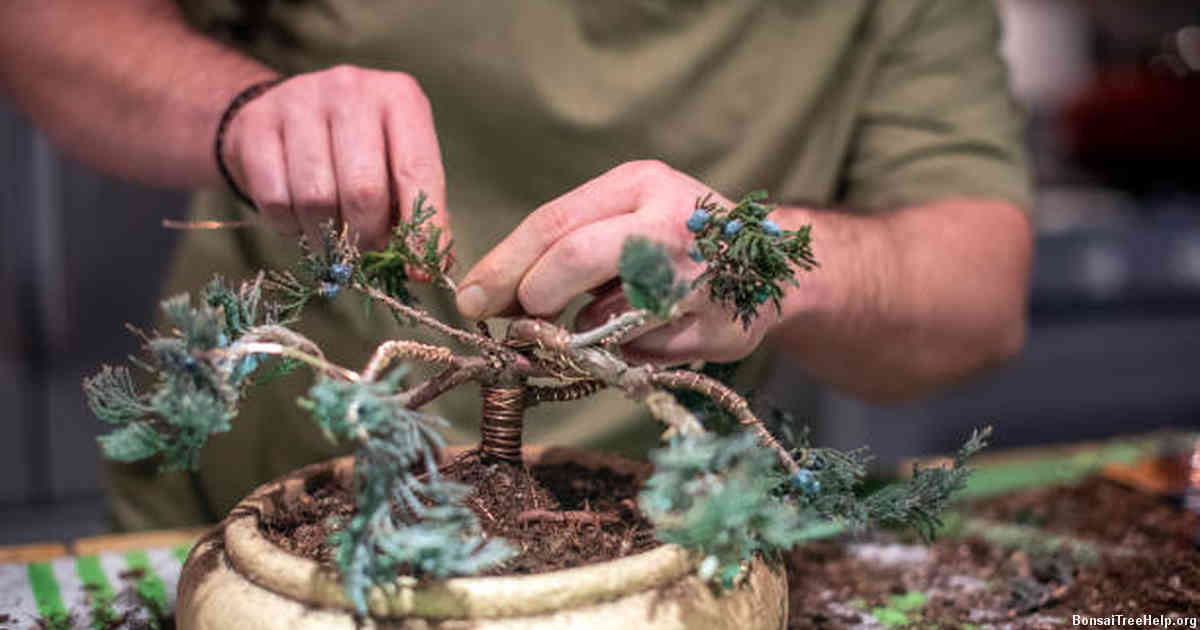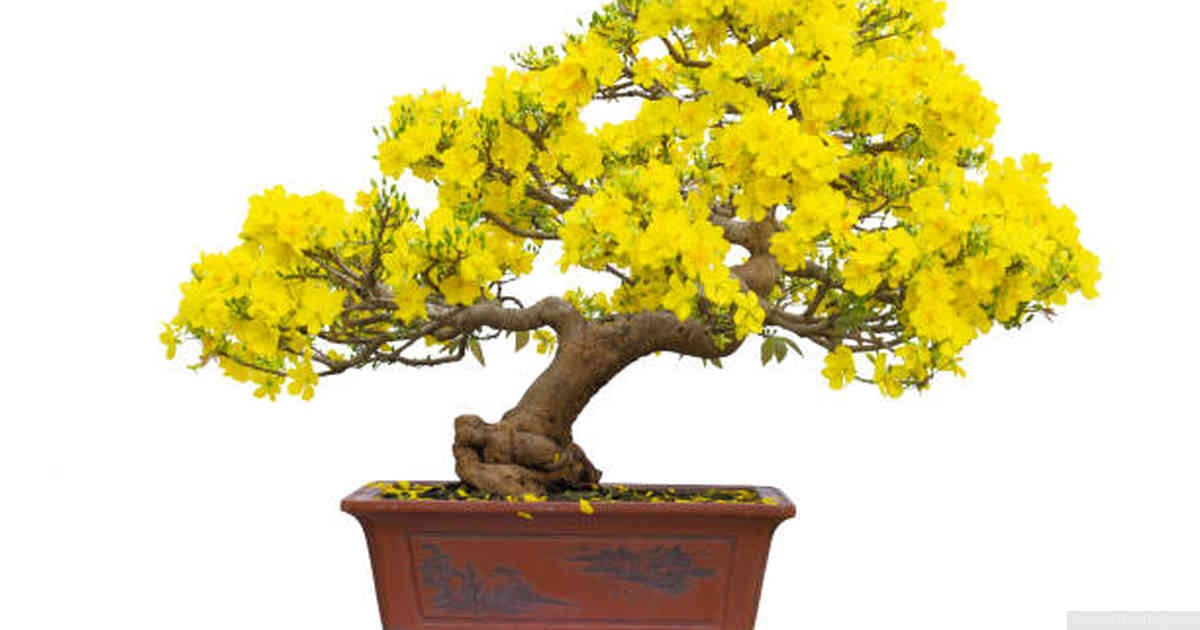
Using a soft-bristled brush, clean off any dirt and debris from the bonsai trunk. A bamboo skewer or toothpick can be used to clear away moss and other organic materials that are lodged in the bark crevices. Use a damp cloth to remove stubborn grime. Avoid using chemical detergents as they may damage the delicate bonsai foliage. For tougher stains, use rubbing alcohol on a cotton ball and rub gently over the affected area. To minimize additional damage, be sure not to rub too hard when cleaning your bonsai trunk.
Contents:
- Removing Surface Dust and Debris
- Using a Soft, Dry Brush to Scrub the Trunk
- Rinsing the Bonsai with Clean Water
- Treating Stubborn Stains or Residue on the Trunk
- Polishing and Buffing the Bonsai Trunk for Shine
- Preventing Future Dirt Build-Up on the Trunk
- Maintaining the Overall Appearance of Your Bonsai Tree
Removing Surface Dust and Debris

One of the most important steps to keeping a bonsai trunk clean is to remove any dust or debris from the surface. To do so, begin by gently brushing away dirt particles with a soft-bristled toothbrush. This will help dislodge small objects that may have accumulated over time. Be careful not to damage the bark or foliage while doing this; it should be done as delicately as possible.
In some cases, water can be used along with the brush for more difficult residues on the bonsai trunk. Use a damp rag and gently scrub in circular motions until all of the dirt and grime have been removed from the tree’s surface. Afterwards, thoroughly dry off the bonsai trunk using another towel or cloth before moving on to other steps in cleaning it.
If you want to give your bonsai trunk a polished look, use a polishing cloth or buffing cloth specifically designed for wood finishes like those used on furniture pieces. After wiping down the entire surface of your bonsai trunk with this cloth, you should notice an improvement in its appearance thanks to bringing out its natural colors and sheen.
Using a Soft, Dry Brush to Scrub the Trunk

A bonsai tree requires special care, and cleaning its trunk is no exception. A soft-bristled brush should be used to wipe away any dirt or dust that accumulates on the trunk of your bonsai. The best way to do this is to start at the base of the trunk, working up towards the top in light strokes that remove any visible impurities without damaging the bark. You’ll want to make sure you use a dry brush so as not to put water onto the wood itself; it’s enough just to knock off loose dirt from brushing alone.
It can be useful to perform a deeper cleanse by using rubbing alcohol on a cotton swab or cloth every few months. This allows you get into tight spaces where water and other forms of liquid could seep in and cause more damage than desired. To ensure your bonsai looks vibrant and healthy, apply some aloe vera gel afterwards as an additional layer of protection against unwanted bacteria growth.
Keep a keen eye out for insects burrowing their way through your bonsai’s bark while brushing with a dry cloth or brush. Fungal infections such as root rot can spread quickly if undetected, so take extra precaution when inspecting during regular maintenance sessions in order to detect any potential problems early on before they become too large an issue.
Rinsing the Bonsai with Clean Water

When caring for a bonsai, rinsing the trunk with clean water is an important part of maintaining its health and longevity. This process serves two purposes: to remove any dust or other particulates from the surface of the tree; and to help circulate air and moisture in the soil around it. To rinse the bonsai properly, one should begin by soaking a soft cloth in warm water. Then wringing out any excess moisture, carefully wipe down the entire trunk, top to bottom. Be sure to gently pat dry with a second cloth before continuing with further care for your bonsai.
After thoroughly cleaning off dirt, grime, and other particles from the trunk of your bonsai tree, it’s time to give it an all-over rinse with lukewarm water. Fill up a bucket or bowl large enough that you can fully submerge your tree without fear of it tipping over. Gently slide your tree into the basin and let sit for several minutes so that all debris can be removed from inside and outside crevices. If needed, using a spray bottle full of warm water will allow access in harder-to-reach areas such as under branches or along thin twigs reaching outward from main body of trunk. Allow ample time for wetness on every aspect of trunk before pulling out again and drying off completely with a third cloth towel.
For further protection against environmental elements like wind or sun damage, some gardeners opt for applying protective waxes specifically designed for outdoor potted plants after rinsing their Bonsais off each season changes come around–summer into fall; winter into spring; etcetera – which helps reinforce hydration levels already maintained through regular watering practices mentioned above. For those living in climates where temperature ranges have greater extremes (i.e. freezing winters/hot summers) this extra step may prove beneficial even more so than others who reside in milder locales year round; as wax provides added layer between atmosphere’s changing temperatures and delicate trees themselves during periods when rainfalls tend towards sparsely spaced ends too long apart timespan wise.
Treating Stubborn Stains or Residue on the Trunk

When treating stubborn stains or residue on your bonsai trunk, the first step is to dampen a clean cloth with warm water. Use gentle circular motions to remove visible dirt from the trunk of the tree. For some cases, adding a mild soap can help further break up any build-up of oils and waxes left behind. If using soap, make sure that it is specifically for use on plants as many soaps contain chemicals that can damage foliage or inhibit plant growth. After rinsing off the soap, check again to make sure all debris has been removed before drying with a clean towel.
If you are still struggling to tackle tough residues like algae or bark splitting, try mixing white vinegar and baking soda into a paste with enough water to create a spreadable consistency. Apply this mixture directly onto the affected area and leave it undisturbed until it has dried completely. Once dry, use your cloth and warm water to gently scrub away any remaining pieces of paste and dirt before drying thoroughly once more.
For severe staining such as lichens growing on your bonsai’s trunk, you may need a stronger solution of diluted bleach in order for removal – two parts water to one part bleach should do the trick. As ever though when cleaning any sort of living organism, be careful not to overuse chemicals or tools as these can cause long-term damage if used incorrectly or too frequently.
Polishing and Buffing the Bonsai Trunk for Shine

Many bonsai enthusiasts relish the thought of giving their beloved tree’s trunk a shiny, polished finish. This type of finishing process requires patience and precision. Begin by cleaning the trunk with warm water and a soft cloth to remove any dust or dirt that may have accumulated on it. Once cleaned, use small amounts of mineral oil or other suitable polishing agent to bring out the shine in your bonsai’s trunk. Gently rub this solution in small circular motions, taking care not to press too hard as you can damage the delicate material of which the bonsai is made from.
After rubbing down the entire surface of your bonsai’s trunk, you should have created a smooth texture. Now comes time for buffing and polishing your work to give it a glossy finish. If you wish to go beyond just achieving sheen on your tree’s trunk, then it might be worth investing in some specialist polish from gardening supply stores or online retailers such as Amazon – these are usually quite inexpensive and make for an excellent way of creating a highly reflective look for your bonsai’s exterior without much effort required.
After applying whatever product is recommended by the manufacturer; use two separate pieces of clean cloth – one dry one damp – gently start buffing away at your shiny new coat until desired results are achieved. With regular treatment following this guide, you will soon appreciate how attention to detail with regards caring for your bonsai really makes all the difference in terms of preserving its majestic beauty and mesmerizing onlookers each time they pass by.
Preventing Future Dirt Build-Up on the Trunk

Maintaining a clean bonsai trunk is crucial for the health of your beloved tree. To ensure that dirt and dust do not accumulate on its exterior, there are certain preventative measures one can take.
It’s wise to keep the bonsai away from sources of dust and other allergens, such as open windows or vents. You may consider wiping down the trunk with a soft cloth or brush regularly too; this will help keep pollen and debris at bay. Moreover, keeping the humidity levels in the room where the plant resides consistent – namely between 40% to 60%, if possible – also helps deter surface grime build-up. Utilizing an indoor humidifier is recommended by many professionals when cultivating these types of trees indoors.
Strategically placing your bonsai in front of open windows can make sure it gets plenty of fresh air while blocking out excess pollution and wind which can create unwanted dirtiness on its bark-covered exterior. With proper upkeep like this you should be able to enjoy a beautiful healthy tree with nary an ounce of buildup caused by unseen forces.
Maintaining the Overall Appearance of Your Bonsai Tree

Maintaining the overall appearance of your bonsai tree is essential for achieving optimal growth and keeping its desired shape. The trunk of a bonsai tree needs to be properly cleaned in order to prevent any buildup, debris or pests from interfering with its health and longevity. To keep the trunk looking attractive, you need to take some simple steps such as trimming away any dead branches or leaves that may have accumulated on the surface of your bonsai trunk. An occasional deep cleaning will help maintain the look and integrity of your bonsai tree’s trunk.
To start off with a proper deep clean, use a soft cloth or brush dipped into warm water containing mild soap solution. Use gentle scrubbing motions around the curves and corners of your trunk before rinsing thoroughly with fresh water. You can then apply some natural oil such as jojoba or tea seed oil which will also provide necessary nutrients and protective layer against harsh climates or insects. As with all trees, pruning is important for maintaining its desired shape – so make sure to cut away any overgrown branches periodically throughout the year.
When watering your bonsai tree always use tepid water (not cold) at room temperature, otherwise it may cause shock to the delicate foliage. Aim for consistency in terms of frequency – avoiding both long dry spells as well as frequent overwatering – allowing just enough time between each session for roots to absorb needed moisture without becoming soggy or prone to root rot diseases due to excessive wetness. Taking these few simple steps will give you healthier longer-lived bonsai tree that looks great inside or outside your home.
Leave a Reply